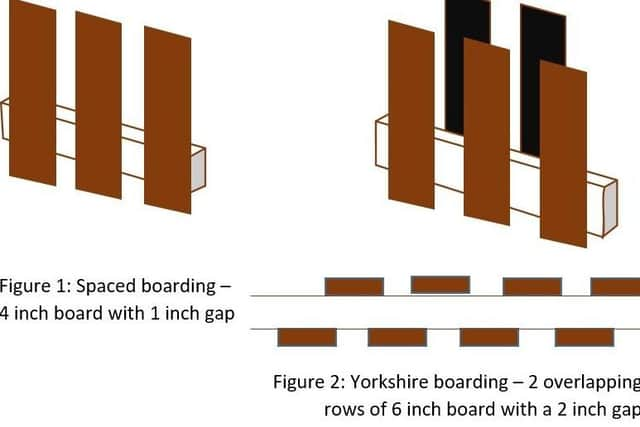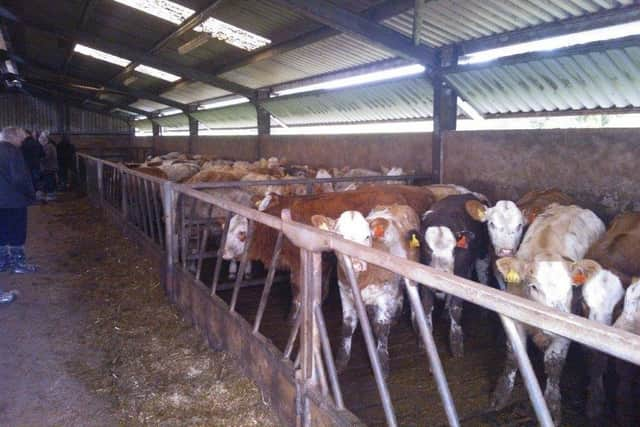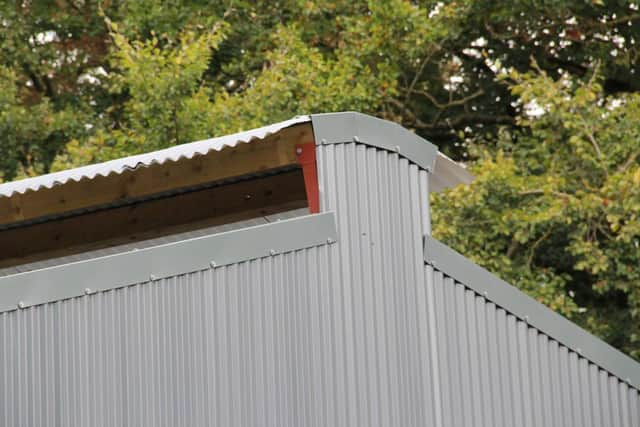Ventilation – The key to healthy animals and healthy profits
and live on Freeview channel 276
CAFRE Beef and Sheep Adviser, Gareth Beacom looks at the key points to consider when assessing ventilation on new or existing buildings. Gareth states: “For a building to be well ventilated it needs two key things, sufficient inlet and sufficient outlet.”
Outlet ventilation
The amount of outlet needed will vary depending on the stocking density of the house and also the distance between the inlet and outlet – this can be tricky to measure exactly but can be estimated by reference points in the gable end e.g. rows of blocks or sheets of tin. It then can be calculated for your specific shed and type of cattle in it.


Advertisement
Advertisement
A general rule of thumb based on recommended stocking densities and a distance of 2 metres between the outlet and inlet is that animals over 500kg require 0.1m2 per animal (as well as 0.04m2 for young calves). For example a 5 bay shed approximately 23 metres long with a ridge gap of 8 inches (20cm) will have an outlet of 4.6m2. This would be enough of an outlet for 46 cattle over 500kg or 32 cows and calves.
Ideally the open ridge would be left open so as not to restrict any air flow, however if it needs to be covered to prevent rain coming in then the height of the cover should be 50% of the width of the ridge (i.e. if the ridge is 30cm in width then the cover should be at least 15cm clear from the roof).
Angled uprights from the ridge gap are another alternative to the cover, these are a much better alternative in terms of ventilation than a cover and will keep out the majority of the rain. If an open ridge isn’t an option then spaced sheeting also should provide enough of an outlet if spaced an adequate amount throughout the house.
Inlet ventilation


Once you have calculated the outlet the inlet can then be calculated. The inlet area should be at least twice and preferably four times the outlet area (0.2 – 0.4m2 per animal over 500kg).
Advertisement
Advertisement
The inlet to the building needs to be above the head height of the cows to avoid a draft on them. It is normally supplied by either spaced boarding or Yorkshire boarding along the length of the building. Inlets along the sides of the building are usually sufficient unless your shed is excessively wide (over 25m in width), in which case inlets along the gable ends will be needed also.
In comparison to spaced boarding and Yorkshire boarding, vented sheeting offers considerably less air flow and hence inlet for the building. Spaced boarding is generally achieved by a 4inch board with a 1inch gap in between, as can be seen in figure 1. Yorkshire boarding is usually constructed using 6 inch boards with a 2 inch gap in between (figure 2) hence allowing more air to enter via the larger spaces and with the overlapping rows creating a barrier to the weather.
If designing a new shed, the positioning of the shed is critical. The shed should be positioned in order to catch the prevailing wind through these inlets to maximise air flow through the building. Hence positioning the building at a right angle to the prevailing wind and also away from other buildings and high trees etc. will maximise air flow. However if it is an open sided building then the open side should be positioned wherever it gets the most protection from the prevailing wind.


Troubleshooting
If there is a ventilation problem in an existing shed then some modifications may be possible to alleviate the problem. The inlet can be increased through replacing spaced boarding or side sheets with Yorkshire boarding. Wind breakers also offer a solution to some buildings to allow a controlled air flow but prevent rain from getting in. Alternatively the bottom of the side cladding or side sheets can be angled out from the wall at the bottom to allow for a clear gap between the wall and the side sheets. Air is then angled up from the side wall as it enters.
Advertisement
Advertisement
The outlet is more difficult to modify however some lines of sheets in the roof (one or 2 per bay) can be raised to allow for an increased outlet, these can be replaced with wider sheets to allow for an overlap and prevent rain from getting in. Alternatively if there is a ridge cap on the roof this could be raised if possible or the gap widened.
Mechanical ventilation systems are also becoming increasingly common on farms, there are 2 main types, ventilation fans and extractor fans. Ventilation fans draw in fresh air from outside hence a good outlet is essential. These are particularly useful in stuffy conditions when airflow is poor or when the siting of a shed doesn’t allow for much natural ventilation. Extractor fans on the other hand assist with the extraction of stale or moist air from the ceiling areas of sheds with poor outlets. These work better in smaller confined areas however various sizes of extractor fans are available.


Whilst there is obviously a cost in all of the above the pay back in terms of increased daily live weight gain, reduced dependence on medication and in severe cases reduced mortality will make it a worthwhile investment, particularly when you consider the lifespan of most farm buildings. Fresh air is a natural disinfectant and has the ability to remove viruses, harmful bacteria and dust from the shed hence the more of it we can get moving through sheds the better.
Gareth concludes: “No matter what type of shed you have or are designing the target is always the same, maximise air flow and ventilation on a still day without leaving the animals exposed to a draft on a windy day.”
If you are in a Business Development group and would like help in calculating the requirements for your shed please contact your CAFRE adviser.